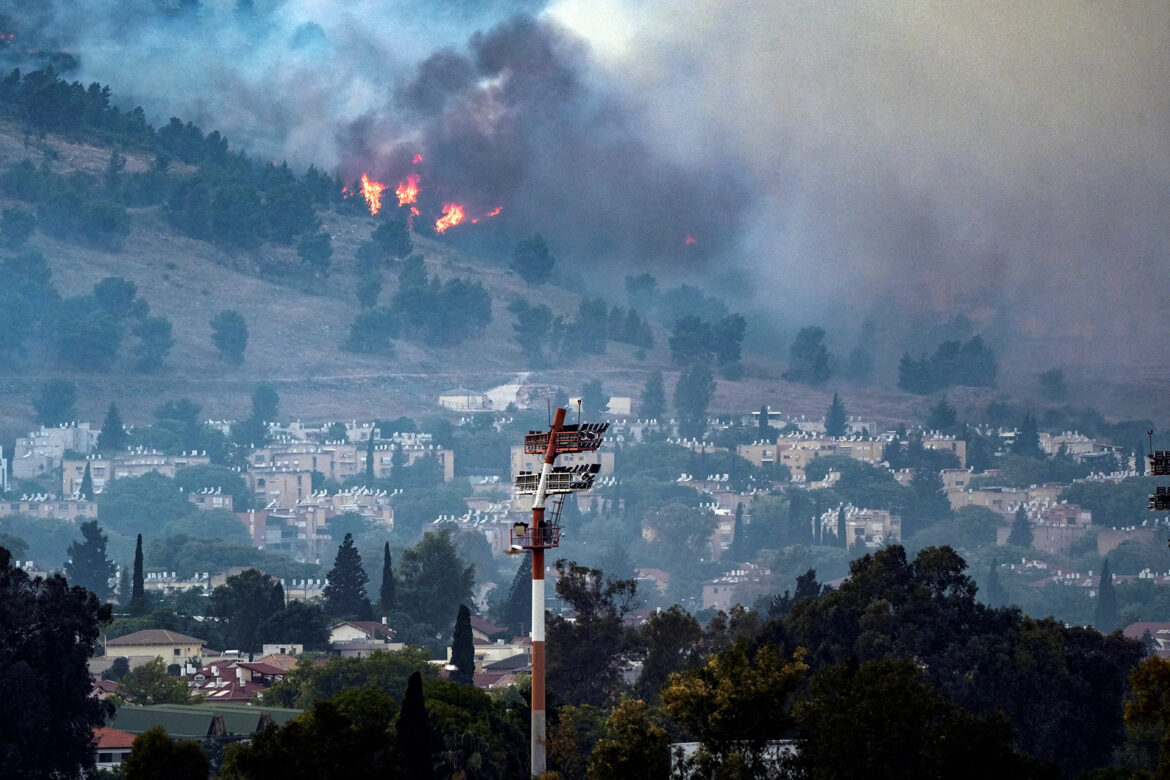The Jerusalem Post newspaper, through the words of an Israeli researcher, drew a scenario for a possible war between the occupying state and the Lebanese Hezbollah, and the repercussions expected to result from it in the region.
Despite the heavy losses of life and property incurred by the residents of northern Israel as a result of the recent escalation with Hezbollah, the newspaper claims that the current situation has not yet reached the scenario of a comprehensive war against this Lebanese armed group.
The Jerusalem Post based its report on statements made by Tal Perry, head of the research department at the Alma Institute, which specializes in studying security challenges on Israel’s northern borders, to the Hebrew-language Maariv newspaper the day before Tuesday.
In his talk, Perry touched on what a comprehensive war might be like on the northern borders of Israel, where he expected that the Israeli front, in the event of a comprehensive war breaking out, would absorb an unprecedented volume of fire even during its war on Lebanon in 2006.
The Israeli researcher said that Hezbollah’s main military strength is the missiles and missiles it possesses, which is the firepower through which it can accurately target the entire territory of Israel, mainly the entire northern region up to the city of Haifa.
According to estimates by the Alma Research Institute, Hezbollah has 150,000 mortar shells, 65,000 missiles with a range of up to 80 kilometers, 5,000 rockets and shells with a range between 80 and 200 kilometers, another 5,000 missiles with a range of 200 kilometers or more, and 2,500 aircraft. March, and hundreds of advanced missiles such as anti-aircraft missiles or cruise missiles.
It is also estimated that if war breaks out, Hezbollah will launch several thousand drones and missiles at Israel every day.
According to Perry, the cities of Hadera and Netanya on the southern line, and even Gush Dan in Tel Aviv, which is the largest urban area in Israel, will all be within the range of Hezbollah’s fire, which will focus in particular on the Gush Dan area, which it considers to be of great value, as its population exceeds 4 million. A population, 95% of whom are Jews, according to the Wikipedia online encyclopedia.
The Israeli researcher expected that Hezbollah would launch its missiles, especially ballistic ones, from northern Lebanon or from the Beirut or Bekaa region, where its sites, strategic formations, launch platforms, and infrastructure are located.
He also expected that Hezbollah, in a comprehensive war scenario, would attempt to invade the Galilee region in the north, and push dozens and perhaps hundreds of its members to infiltrate a specific area it targets, adding that the Radwan Unit – one of its elite forces – is capable of doing so.
The Israeli researcher considered it a psychological war on the one hand and a harbinger of things to come, noting that Hezbollah wanted war with Israel, but the Islamic Resistance Movement (Hamas) preceded it with its attack on October 7 last year.



